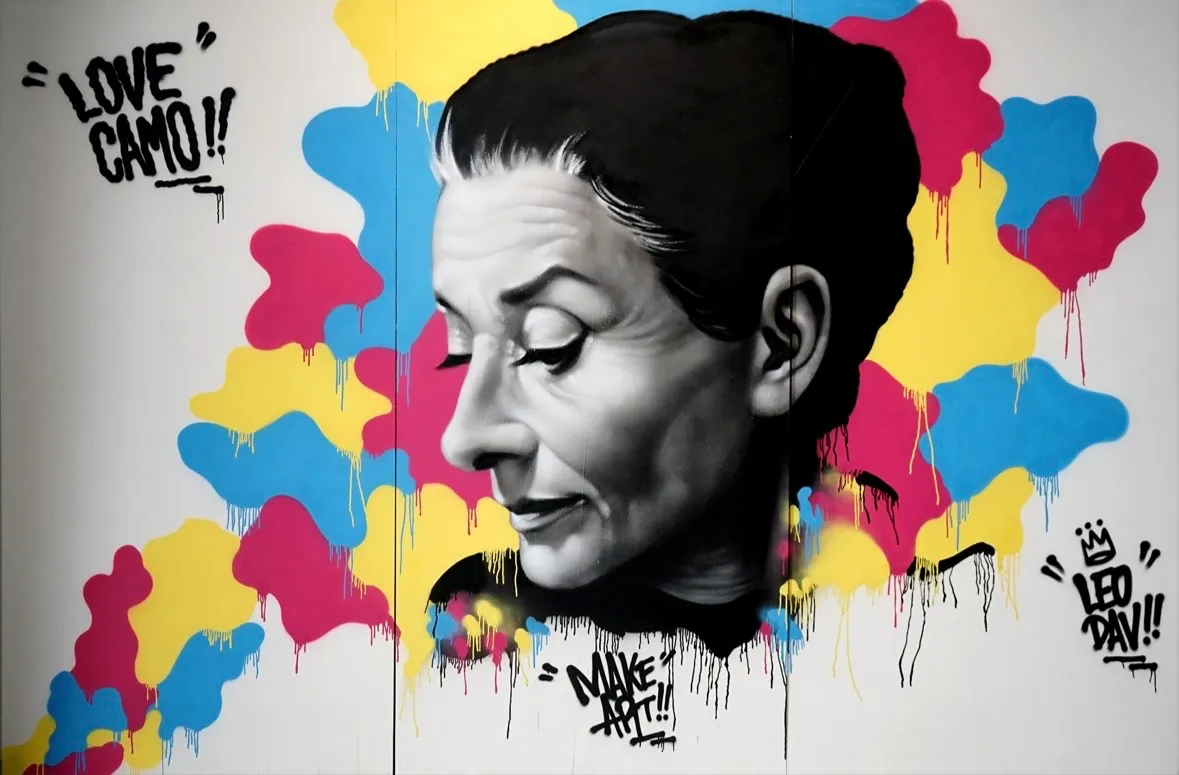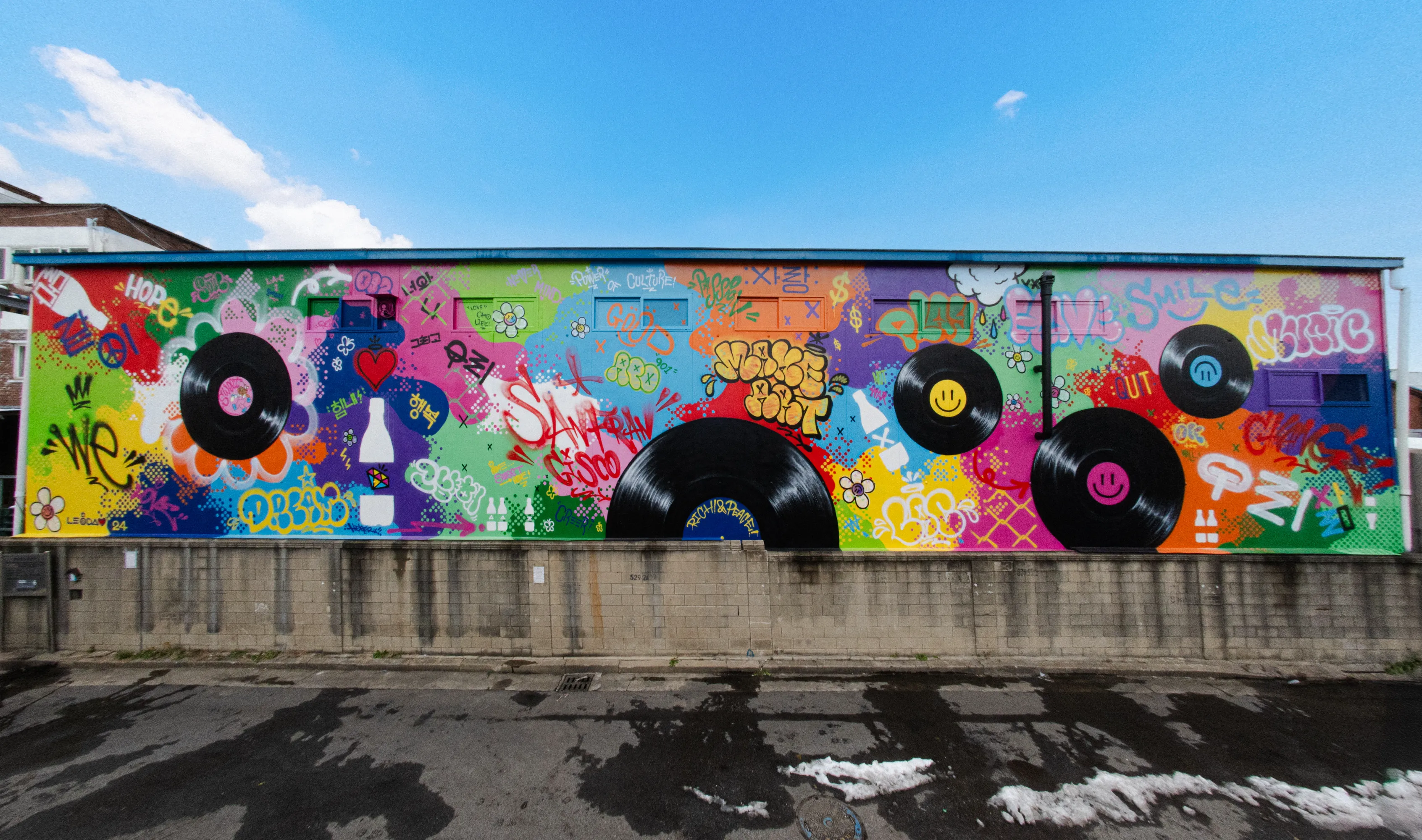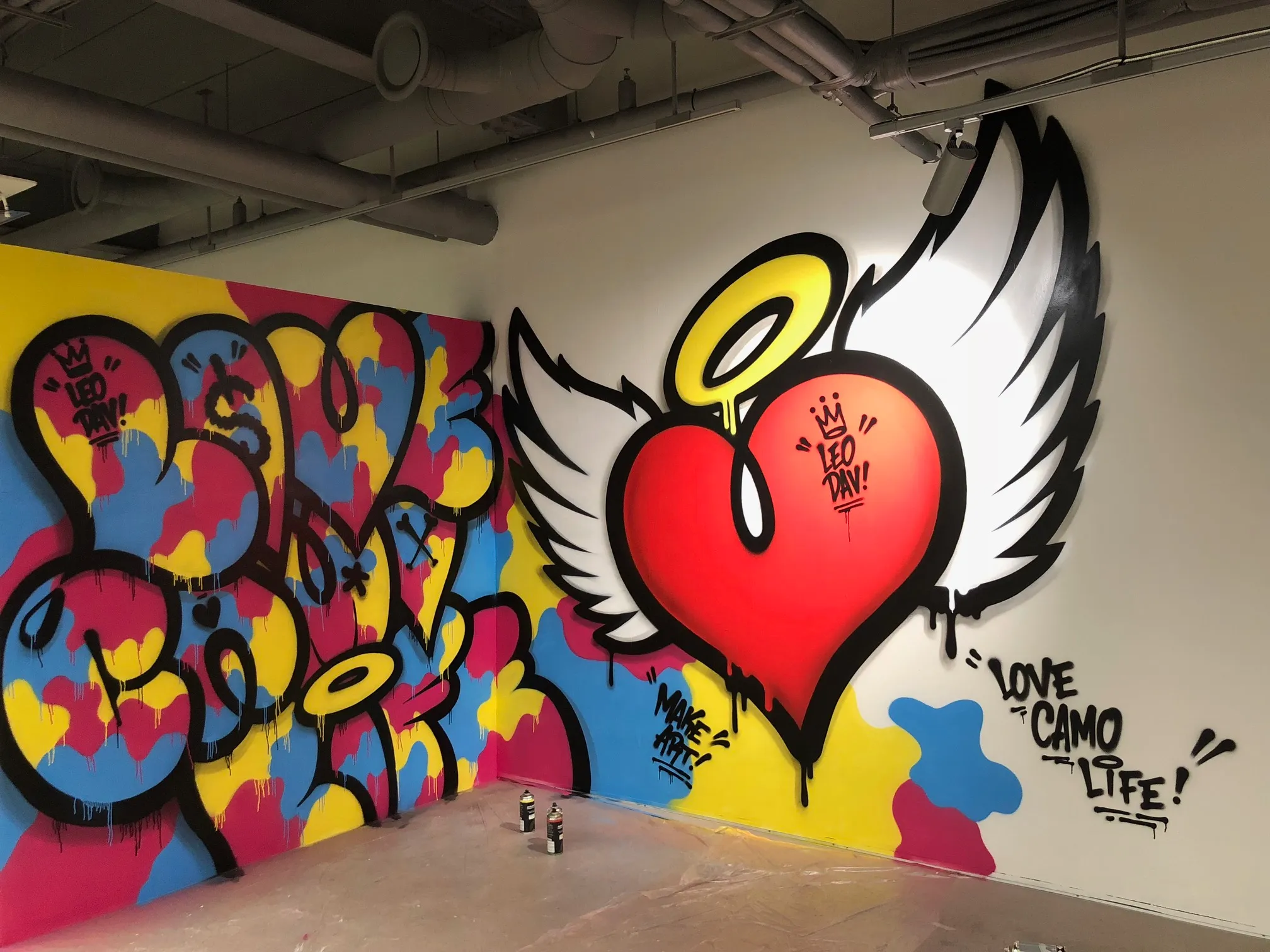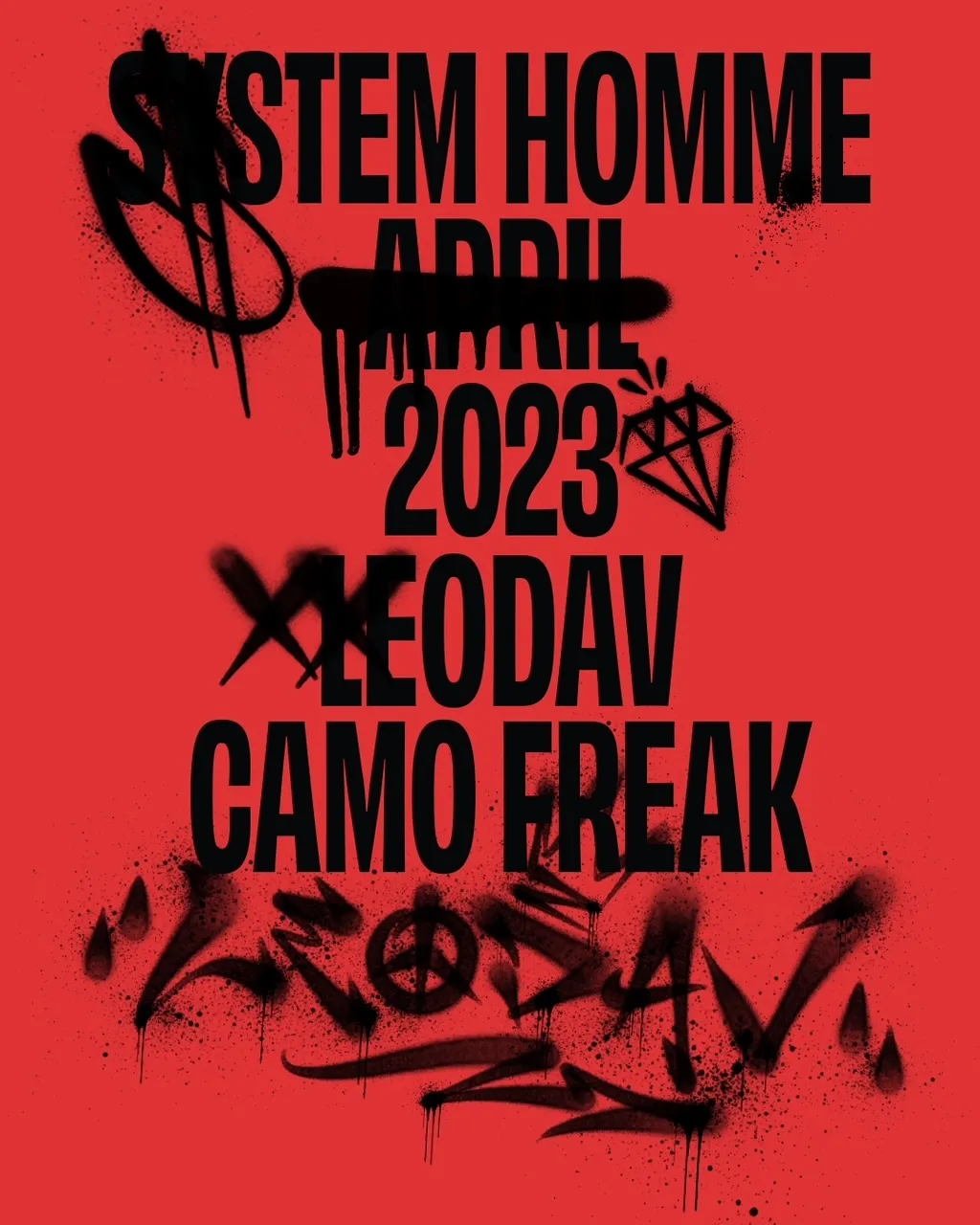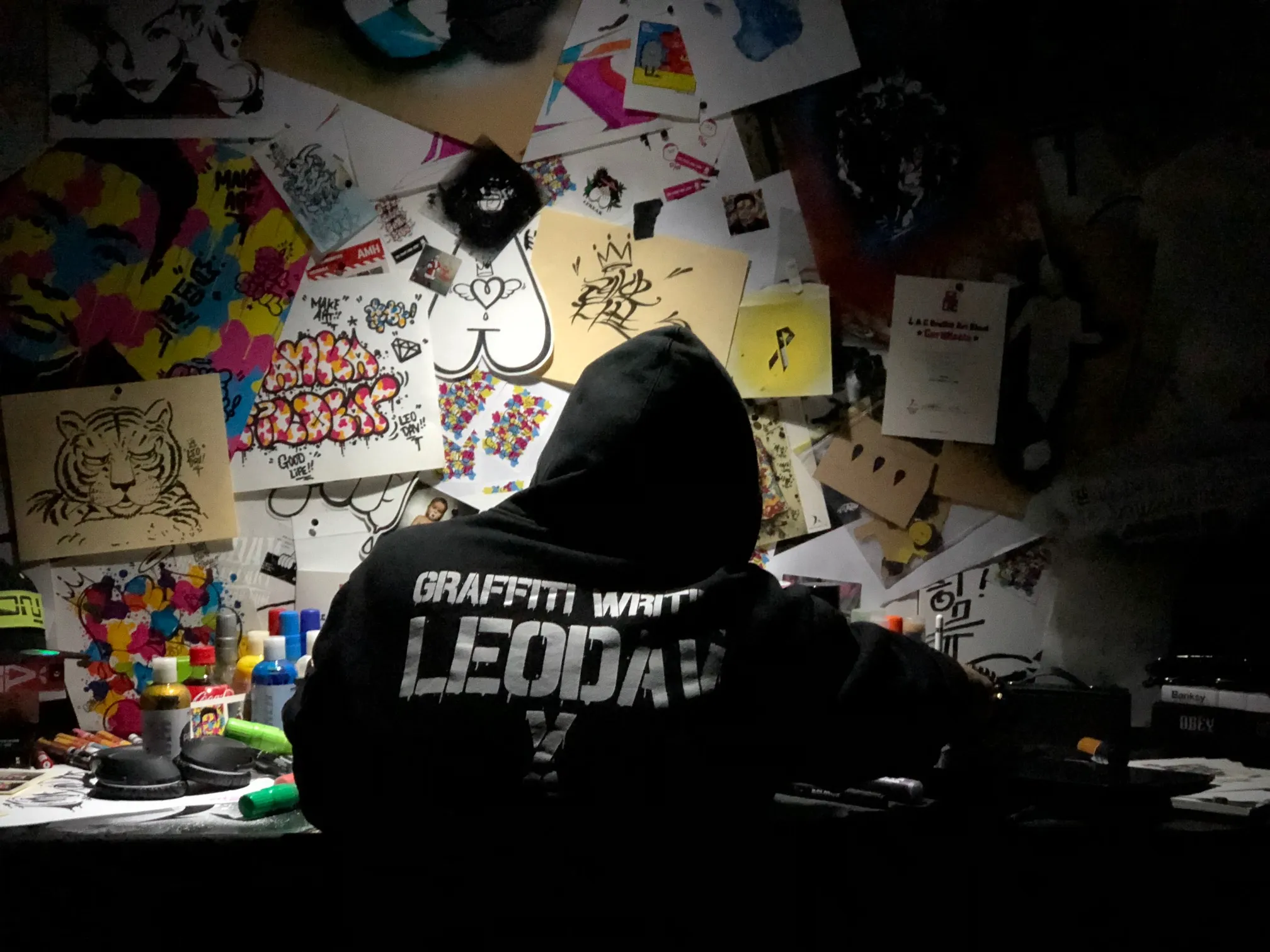LEODAV — Painting Courage Into the City Walls
In Seoul’s restless urban rhythm, where glass towers mirror the speed of progress, one artist insists on colour — not merely as pigment, but as courage. LEODAV (Choi Sung-Wook) has been painting the hidden pulse of Korean streets since the late 1990s, when graffiti was still a whispered rebellion. His art, defined by two intertwined identities — “LEGACY,” honouring the nation’s independence activists, and “LOVE CAMO LIFE,” exploring individuality within conformity — transforms grey walls into living testaments of identity, empathy, and hope.

In this rare conversation, LEODAV reflects on the origins of Korean graffiti culture, the moral weight of history, and how K-pop — particularly ATEEZ — reignited his creative empathy. With honesty and vision, he speaks of colour as philosophy, of legacy as a living force, and of his dream to one day paint freely across a united Korea.
You began doing graffiti in 1998 — long before street art was part of the Korean mainstream. What first drew you to it, and what did those early days look like for you?
My first encounter with graffiti was when I entered university. As hip-hop culture began to truly go mainstream in Korea in the late 1990s, I joined a hip-hop club to learn dancing. Initially, I started out of curiosity, wanting a completely different experience since I had been active in a traditional Korean percussion club (Samulnori) during high school. By chance, I saw graffiti in dance videos of overseas dancers and first tried graffiti in our club's practice room.
As an art major, the vibrant colours and complex letter styles were a massive visual shock to me and stimulated a desire to try it myself. Starting with the club room, I continuously did graffiti on the walls of the university's art center and through part-time jobs during my school life.
In the very beginning, there were no dedicated graffiti spray paints in South Korea (like Montana 94 or MOLOTOW CANS), so I often used general industrial spray paints, creating pieces that relied heavily on black and white rather than colorful palettes. Gradually, color spray paints improved, and graffiti-specific sprays began to be imported and sold here, leading to rapid development up to the present day.
Your concepts “LOVE CAMO LIFE” and “LEGACY” have become almost your artistic signature. Could you share what each represents and how they connect?
First, "LEGACY" means 'heritage,' and it became a new artistic identity for me when I began creating artwork featuring independence activists in 2013. I believe that the noble spirit and achievements of the ancestors who sacrificed and dedicated themselves to our nation throughout Korean history are the most precious heritage that must be passed down to future generations.
"LOVE CAMO LIFE" is my signature style and message that I have been using as the main theme of my work since 2014. The original meaning of camouflage is not to reveal oneself by taking on colors similar to the surrounding environment. The reason I use this motif is that the way we live our lives today often feels like a gray camouflage within the gray city. I observed many people, who used to play, sing, and dance together, gradually conforming to the world and having to decide their future based on money. My message holds the hope that starting now, or with our next generation, we can create a world where people can live by expressing their own unique color. I believe that a more wonderful world can be created, not by a camouflage made up of similar colors blending together, but by a collection of camouflages where each person lives distinctly in their own color.
These two concepts are strongly connected by the value of 'the courage to reveal one's own color.' The ultimate sacrifice and dedication of the independence activists for the independence of Korea is similar to the act of not conforming to the era of war but boldly revealing their own color to fight for independence. To convey this shared philosophy, I sometimes apply the colors and patterns of LOVE CAMO LIFE to the LEGACY series of independence activists.
Much of your work blends history with urban energy — painting independence figures, everyday people, and modern life on the same walls. How do you balance the past and present in your art?
When creating my artwork, I deeply contemplate questions like: 'Based on the hidden episodes or philosophies of the independence activists, what would they look like if they were summoned to the present day? Or what would they think if they saw our current era?' This very question is my method for connecting the values of the past with the urban energy of the present.
The most critical aspect is being careful that the message is not distorted during the process of summoning the past. Therefore, from the conceptualization stage of my work, I make an effort to strictly refer to materials and verified facts provided by historians.
I want the independence activists to exist on the city walls looking as hip and powerful as our modern-day superheroes. Through this work, I aim to balance the past and present so that viewers do not perceive the noble spirit of the past as merely a heavy burden, but rather discover and inherit the value of that legacy within the dynamic energy of the contemporary world.
When someone passes one of your murals in the city, what do you hope they feel or think in that brief moment?
What I appreciate most is the moment when people pause briefly and tilt their heads, thinking, 'Huh?' when they see my mural. When walking past an ordinary city wall and discovering vibrant, intense graffiti, I hope they feel a fresh curiosity that momentarily pulls them out of their routine.
If the work features an independence activist, I hope they move beyond simply asking, 'Who is that person?'and instead ask: 'How does that person's sacrifice connect with the freedom we live in today?'
Simultaneously, when viewing the 'LOVE CAMO LIFE'series, I want them to question whether their own life is hidden within a gray camouflage, asking: 'Am I truly living in my own color right now?'
Ultimately, I hope that this brief encounter with the mural enables them to simultaneously discover and affirm the noble legacy of the past and the value of their present life, giving them the courage to reveal their true color. I wish that small spark of curiosity injects positive vitality into their daily lives.
You’ve also painted or been inspired by ATEEZ — including graffiti featuring their names and visuals. What inspired you to connect your art with them, and how do you view the link between K-POP and street art?
My connection with ATEEZ began in 2021when I received contact from the ATINY fandom, which led me to listen to their first works and music. Although they are musicians who started in Korea, the fact that they were first recognized overseas, continue to receive constant love, and are steadily developing and creating their own style, gave me great inspiration, even though it's a different genre.
Among their songs, "야간비행 (Turbulence)" resonated deeply with me, as it sounded like a narrative about my own journey and life through the process of doing graffiti, so I decided to create an artwork based on it. While I currently create the artwork digitally, I plan to transfer it onto canvas or walls to produce physical pieces in the future. Starting with ATEEZ's music, I plan to express various cultures that inspire me—not just K-POP, but also music, books, movies, and more that transcend borders—in my own unique way.
I believe the link between K-POP and street art is 'Empathy (공감=Gonggam).' Street art uses the city walls as a canvas to communicate directly with the public, reflecting their emotions and social messages. K-POP also uses its music and performances, born from fierce dedication, to deeply empathize with the growing pains, dreams, and passion of fans worldwide, offering comfort and courage. In this way, both genres share the commonality of reaching people's hearts across borders and languages with authentic messages, thus creating an emotional connection among them.
Street art often carries messages of rebellion or identity. How do you see your role as a graffiti artist in today’s Korean society?
In its early days in Korea, graffiti—influenced by hip-hop culture imported from the U.S.—strongly conveyed messages of 'rebellion' and 'resistance.'However, after 27 years of working in this field, I believe my role has shifted from being a 'rebel' to being a 'communicator and messenger of positive ideas.'
Modern Korean society, marked by fierce competition and rapid change, often sees people hiding their individuality and conforming to a gray camouflage existence. As a graffiti artist, I want to use the walls of the street to instill positive messages like "LOVE CAMO LIFE."
Through my work, I hope people will pause and discover the message that 'you are beautiful and valuable just as you are,' and gain the courage to affirm their present life and reveal their true color. I see my role as a cultural medium that plants a sense of 'self-identity' within the vibrant energy of the city.
Many of your pieces could easily translate into design, fashion, or even interior spaces. Do you imagine your art evolving in those directions — collaborations, wearable art, or design projects?
Yes, I hope that my art continues to evolve beyond walls and canvases, moving into various directions such as collaborations, wearable art, and design projects. I have already had several successful projects in this vein.
In particular, the collaboration I did with the representative Korean fashion brand, "SYSTEM HOMME," was a truly wonderful project. I felt a great sense of reward seeing my graffiti gain new life on clothing and accessories, permeating the daily lives of a wider public and breaking down the boundaries between art and everyday life. I hope to continue expanding my message across various fields in the future.
What project are you most proud of so far — and what new direction are you excited to explore next?
The project I am most proud of so far was the large-scale artwork titled "The Gaze of a Hundred Years" (백년의 눈빛), which was 8 meters wide and 2.5 meters high. I was invited by an agency directly under the President to create this piece in 2019 to commemorate the 100th anniversary of the March 1st Movement and the establishment of the Provisional Government of the Republic of Korea. This work instilled a profound sense of pride in me for fusing history and art.
The next direction I am excited to explore is connected to my biggest artistic dream. When the Republic of Korea ends its truce and enters an era of peace, I want to be the first artist to travel by car or train to North Korea and leave graffiti there. Starting with that work, I wish to travel and create art along the land route. I hope to greet an era of peace without warthrough my art.
Finally, if your city walls could whisper one story to you at night, what would they say?
Thanks to you, it became 'LOVE CAMO LIFE.'
